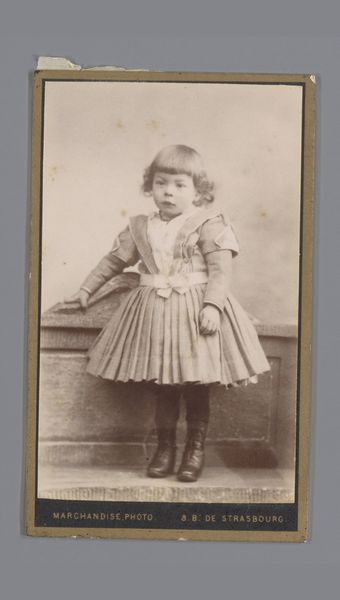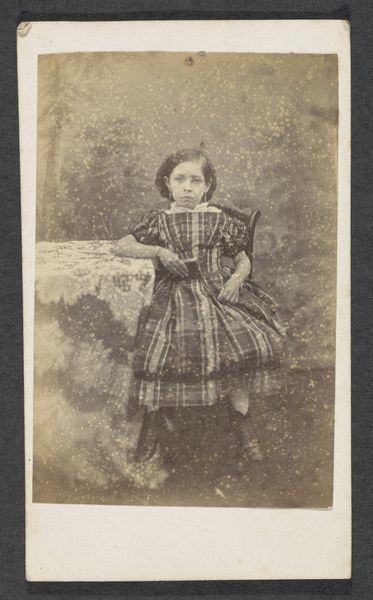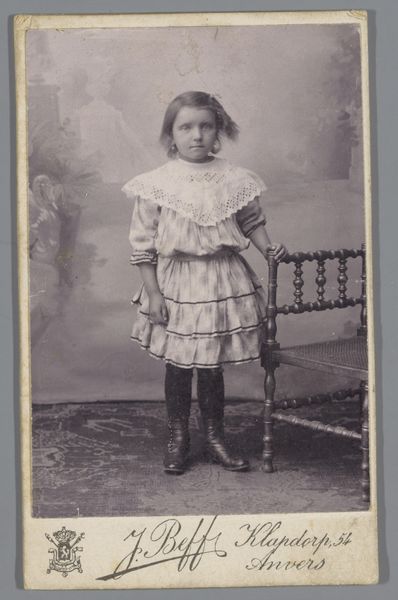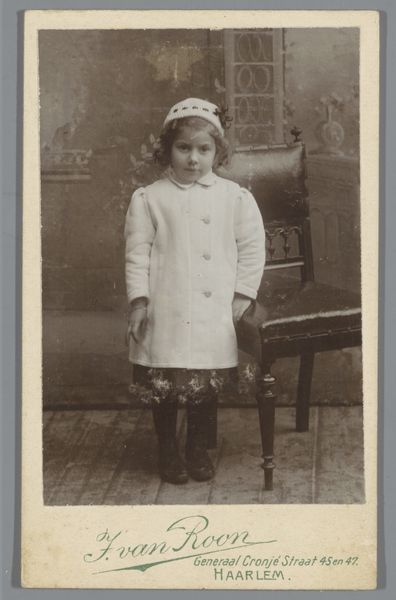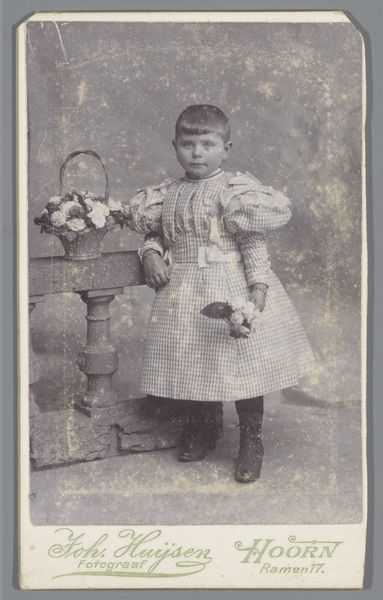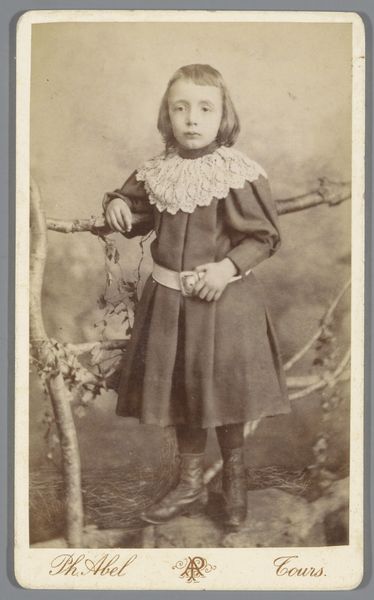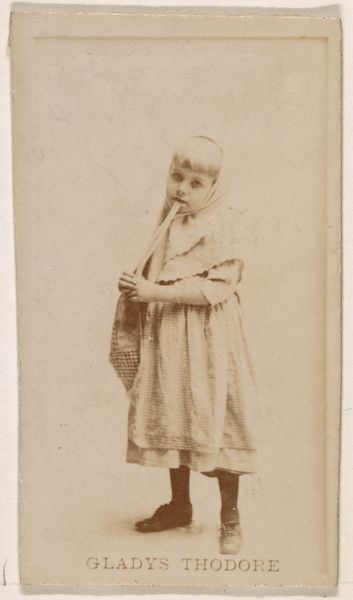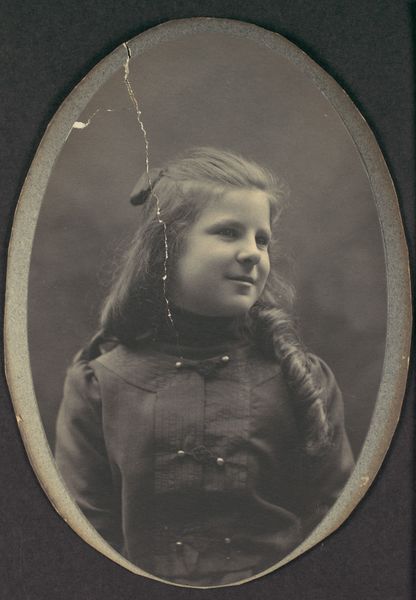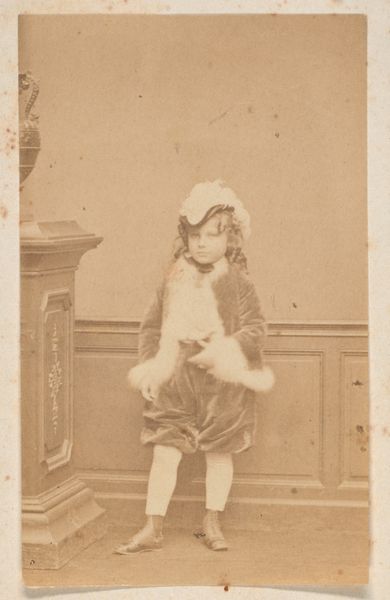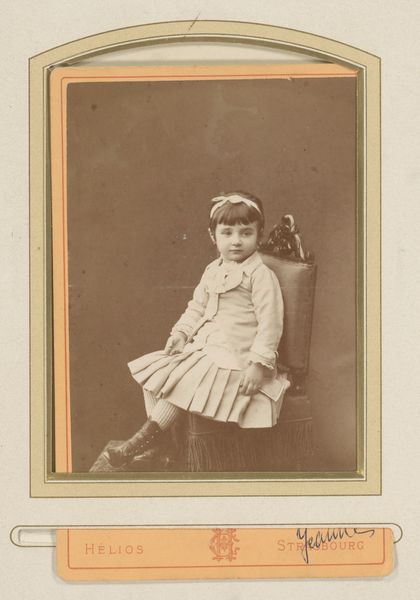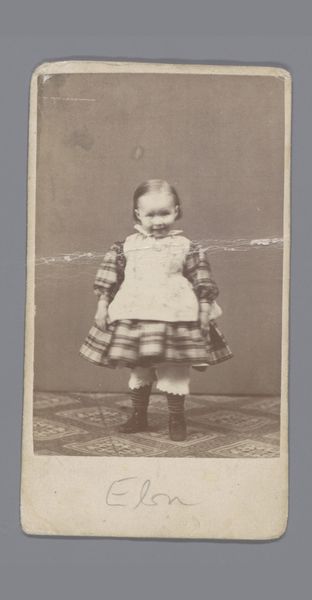
photography, gelatin-silver-print
#
portrait
#
16_19th-century
#
photography
#
coloured pencil
#
gelatin-silver-print
#
19th century
Dimensions: height 104 mm, width 61 mm
Copyright: Rijks Museum: Open Domain
Editor: Here we have a gelatin-silver print from somewhere between 1897 and 1901, titled "Portret van een onbekend kind staand op een stoel," or "Portrait of an Unknown Child Standing on a Chair" by Charles van Put. There’s something incredibly sweet and sad about this little kid posed so formally. What strikes you about this portrait? Curator: The formality is definitely key. These studio portraits were aspirational, marking a middle-class desire for upward mobility. They are public declarations of social standing. Notice how the child is slightly elevated on the chair – what does that convey? Editor: It makes the child appear taller and more imposing, but also slightly unsteady. It's interesting to think of it as an intentional social performance. Were photographs like these common forms of social currency? Curator: Exactly! Photography democratized portraiture, making it more accessible. Think about the studio setting – it’s a constructed space, designed to project a particular image. And these photos had very wide distribution; even on this small print, there is room for the studio’s branding and address to signal a concrete site within the cultural geography of Antwerp. Who this child *is* isn’t as important as who they *appear to be*. Editor: That makes a lot of sense. The setting feels both intimate and deliberately staged now that you mention it. I had not considered its impact, only considering the aesthetics of it. Curator: Precisely! Photography wasn't just about capturing reality, it was about crafting it, negotiating class identity, and reflecting cultural values related to childhood and family. The very act of commissioning this says a lot about their cultural aspirations. Editor: So, beyond its visual appeal, it’s really a mirror reflecting social ambitions and cultural shifts of the era, democratizing portraiture and capturing upward aspirations in society! I appreciate your expertise here! Curator: Indeed. Looking beyond the image to its historical and cultural context provides invaluable insights. Thank you for giving me a reason to analyze the photograph further!
Comments
No comments
Be the first to comment and join the conversation on the ultimate creative platform.
